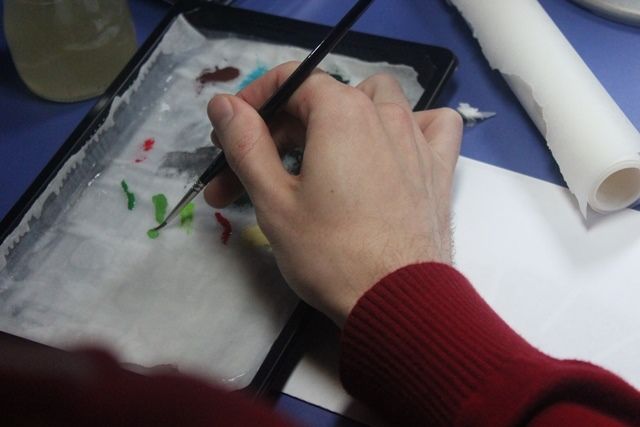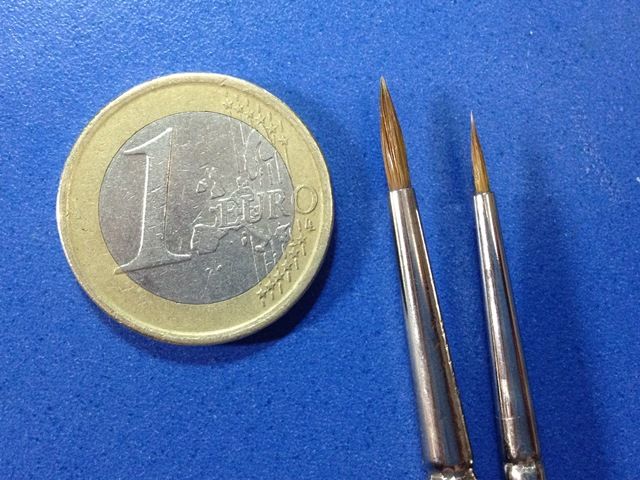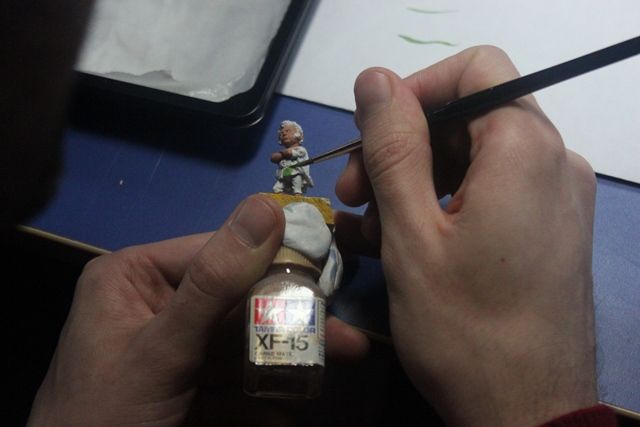You're currently being redirected to volomir.com, it will only take a few moments.
In my opinion, one of the most basic concepts in miniature painting is the proper way to use a paintbrush. The speed and quality of our painting depends on how well we know how to use it. Specially crucial is to control the brushstroke when we choose a style of painting based on layers or gradients, because in these cases the way we lay our brushstroke is the key of the process. Other styles like puntillism or wet painting permit us more freedom when choosing the brushstroke, but we should take into consideration how the use our paintbrush will affect our choice.

When using a painting style based on layers, the first myth that needs to be broken is that a brush to paint miniatures needs to be small. We are actually going to prefer using a brush with a big head, capable of loading a decent quantity of paint so that we don't have to go back to our palette every time we give a stroke. We will also prefer longer hairs because we are going to paint with the brush horizontally, using the pointed tip of the brush only when strictly necessary. Small brushes with short and little hair, though pointy, do not have enough capacity for paint loading and they will rarely keep paint wet from the palette to the miniature.

Comparison between a euro coin, an interesting W&N size 1 and a not so interesting W&N size 00.
To apply a paint layer, the brushstroke will be performed describing a plane instead of a line, we don't want to drag the tip of the brush, we do it laterally. With a wider brushstroke, paint will cover and distribute more homogeneously and we will take advantage of the load capacity of a good brush. Also, we will control better the pigment distribution this way.

With every brushstroke, we'll notice that at the end of the stroke, just before lifting the brush from the painting surface, we are dropping the biggest quantity of paint. The colour drop will be bigger the more we load the brush. This is a paint drop which could spoil a good job that seemed smooth if we don't control it. However, now that we know about it, we can use for our own benefit. If we are, for example, trying to do some shadows, we will make sure that the direction of the brushstroke is that which leaves that final colour drop in the area of maximum shadow, for the colour we are painting. The same will occur when painting lights.
If what we want to achieve is a homogeneous colour plane, the best thing to do is dilute the paint as much as possible. We need to master brush-stroking to be able to apply semitransparent layers of paint. Brush-stroking in planes or semi-planes is also key in this case. What we will control carefully is the dilution of paint, and the quantity of paint that the brush will load when painting. The more diluted the paint is, the more transparent the layer will be, and as we reduce the quantity of paint in the brush, the more control we will have over the effect and faster the process will be, because the paint will dry faster. If we load the brush too much, we have the risk of soaking instead of painting, and when there's too much water which does not dry fast on the miniature, the dissolved pigment will not be homogeneously distributed, it will disperse and crate paint stains.

The most important thing to consider is that we need to let each layer of paint dry before applying the next one. This is by far one of the most common and extended errors when starting to paint by layers. With every brushstroke we will deposit wet paint on the surface and if we use the brush again over that same surface before the paint has dried, instead of depositing more paint we will be moving around the paint previously applied.
Whatever our ability with the brush may be, the state and quality of our brush is fundamental, we must never be careless about it because this can be a continuous reason for frustration, or even a limitation to our painting skill.

3 comments:
This was one of the best tutorials I have read. Thank you very much!
really a very helpful and explaining tuto about mistakes we make an we never!! do them again.thanks!!
Brilliant, really well worded and easy to follow, lots of people will benefit from this, thanks and keep smiling :)
Post a Comment